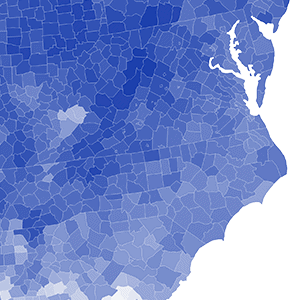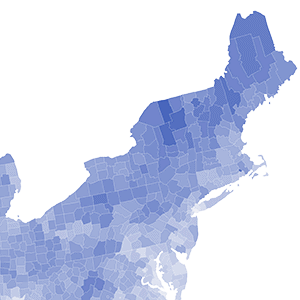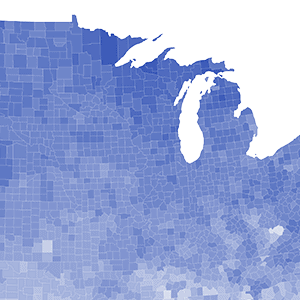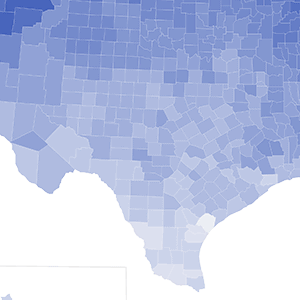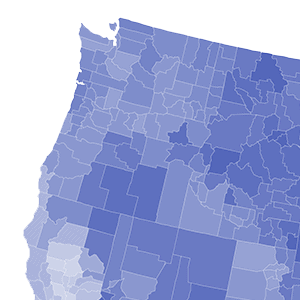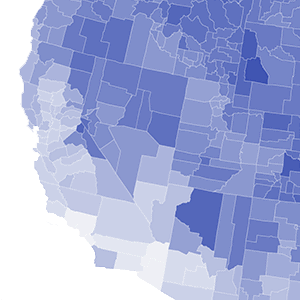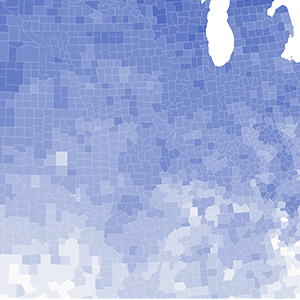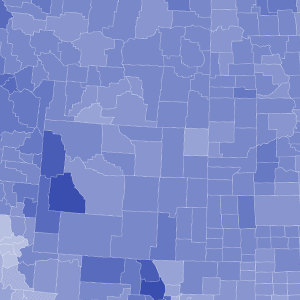HOW WEATHER AFFECTS AIR BARRIER INSTALLATIONs IN THE SOUTHEAST
Because many air barrier products available today can only be applied under certain weather conditions, you’re already facing unpredictable installation delays. Combine the two different ranges of limitations for 1) the presence of moisture, and 2) temperatures below 40°F, and your window just got even smaller, potentially wreaking havoc to your construction schedule.
That is why we at PROSOCO made sure our air barriers didn't have these weather limitations.
The impact of moisture and temperature on the construction schedule
Percentage of days with either 0.1" of precipitation or temperatures below 40°F in the past year.
Weather has a heavy impact on air barrier installations in the Southeast
We looked at data from across the country to see how much of the year has either 0.1" of precipitation or has a temperature that reaches 40°F or lower (see below on why that temperature limit is important). Here is what it looks like for the Southeast region of the U.S.
- Air barrier installations in cities across the Southeast region are impacted by moisture and temperature an average of 35% of the year.
- Atlanta (47% at the time of writing) and Birmingham (45% at the time of writing) are significantly impacted by both moisture and temperature.
- Even though impacts from temperature in places like Baton Rouge (only 11% of the year affected) don't seem like much when combined with the impact from moisture (27%) it eats up almost a third of the construction schedule.
- Locations like Jacksonville and Miami are not affected much by temperature, but moisture-related issues still impact over a third of the calendar.
Most air barriers cannot be installed in wet conditions
What to look out for
Traditional air barrier chemistry, like acrylic emulsion technology, is made to keep water out when fully cured. But any introduction of moisture into the process before the air barrier is fully cured can cause lots of problems. Here is a common statement from acrylic emulsion air barrier literature stating that not only can they not be installed in wet conditions but cannot be installed if there is a chance of rain in the forecast. If it does happen to rain within the 16-hour window listed on the technical data sheet below, the air barrier can literally wash right off the wall.

To avoid moisture limitations
PROSOCO's Fast Flash system is a complete, monolithic building envelope system that can be applied in damp conditions and it is immediately waterproof so it can withstand rain right after application.
Most air barriers cannot be applied to damp surfaces
What to look out for
Watch out for air barriers that can only be applied on a dry substrates. In reality, if an air barrier can only be applied in dry weather conditions to completely dry substrates, you may have to wait several days or even several weeks to make sure everything the substrates are dry, current conditions are dry and the forecast is dry as well.

To avoid moisture limitations
PROSOCO's Fast Flash system is a complete, monolithic building envelope system that can be applied in damp conditions and it is immediately waterproof so it can withstand rain right after application.
The impact of moisture on the construction schedule
Percentage of days with at least 0.1" of precipitation in the past year
The low-temperature limitations of some air barriers can cause problems, even in the Southeast.
Temperature issues are not a big factor on construction sites throughout the Southeast, but when you look at the data, it is not a non-factor either. Especially when many traditional air barriers have low-temperature limitations that are fairly common on thermometers in Georgia, Mississippi, Alabama, and the rest of the Southeast region.
Most air barriers have low temperature limitations that aren't that low
What to look out for
Many air barriers like this acrylic emulsion air barrier state that the product should not be applied when temperatures are below 40°F.

To avoid temperature limitations
PROSOCO's Fast Flash system is a complete, monolithic building envelope system that can be applied even in temperatures below 32° F.
On the map below, the areas shown in darkest blue reach temperatures of 40°or below on a third of the days throughout the year. With the exception of the Florida panhandle, almost the entire region is affected by temperature between 10% and 25% of the time.
The impact of temps below 40° on the construction schedule
Percentage of days with temperatures below 40° in the past year
All the data we analyzed shows that the combination of temperature and moisture limitations of many air barriers can add up to big problems.
